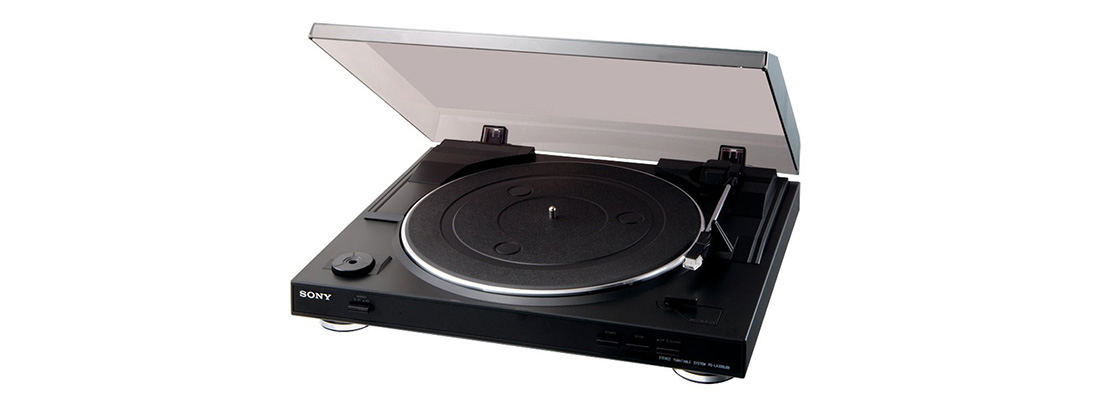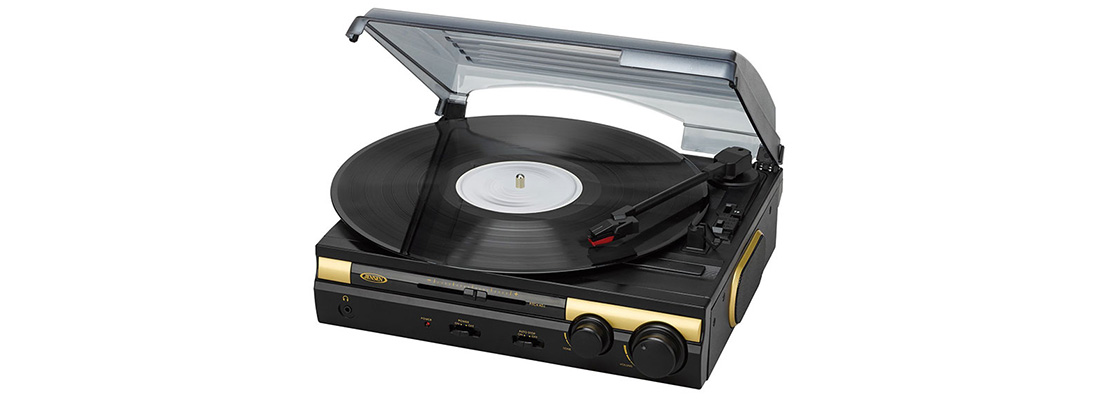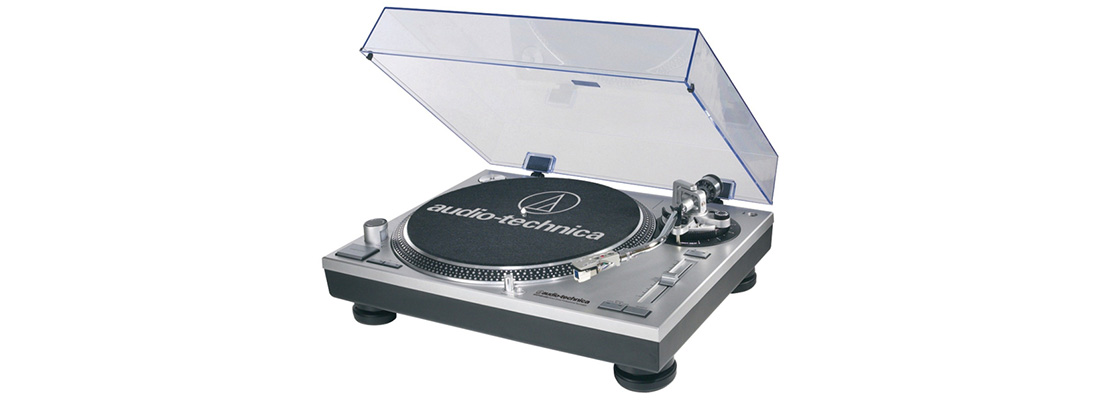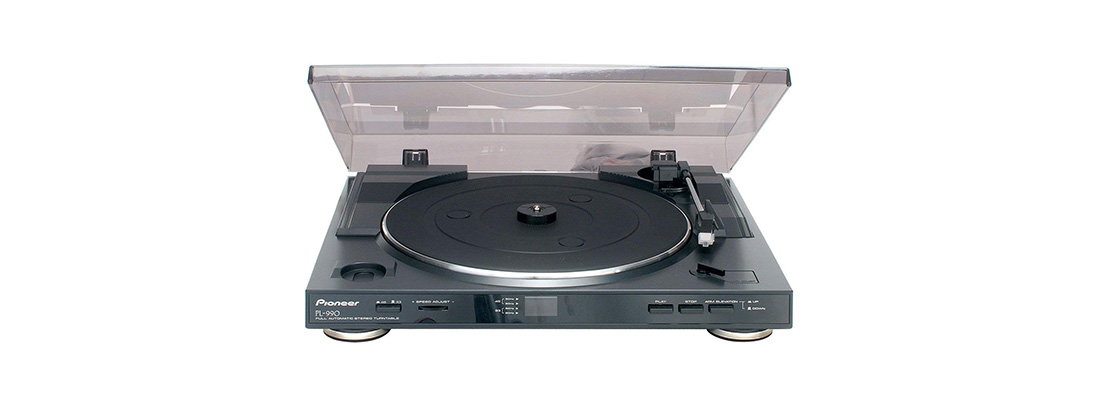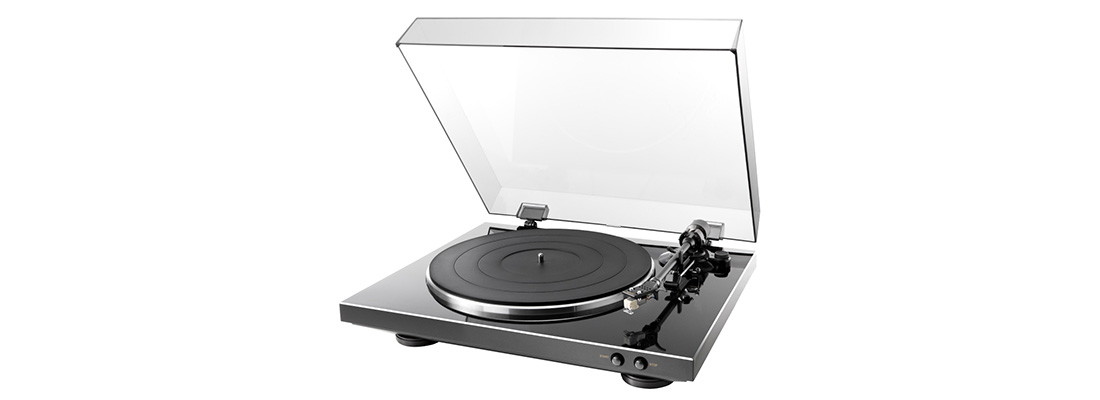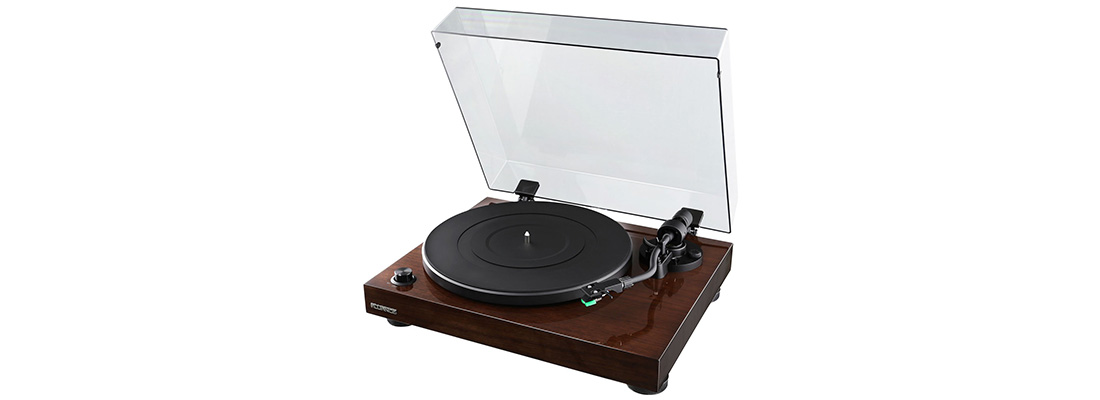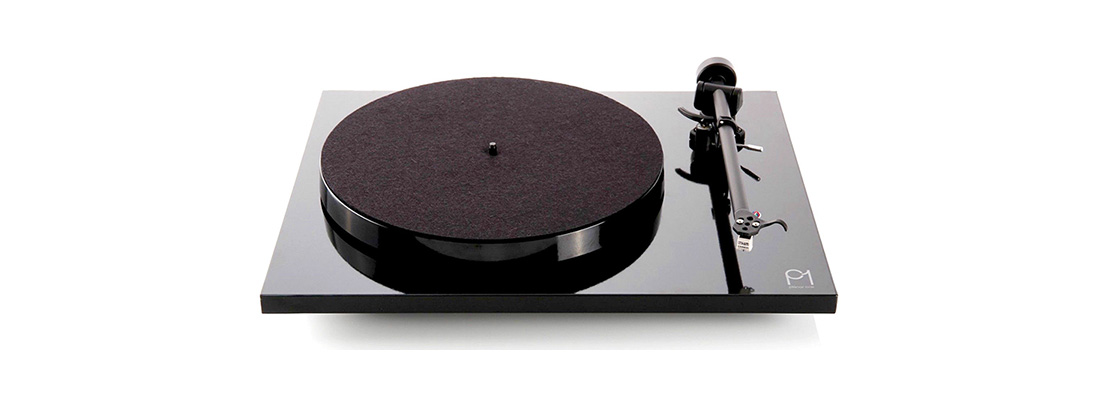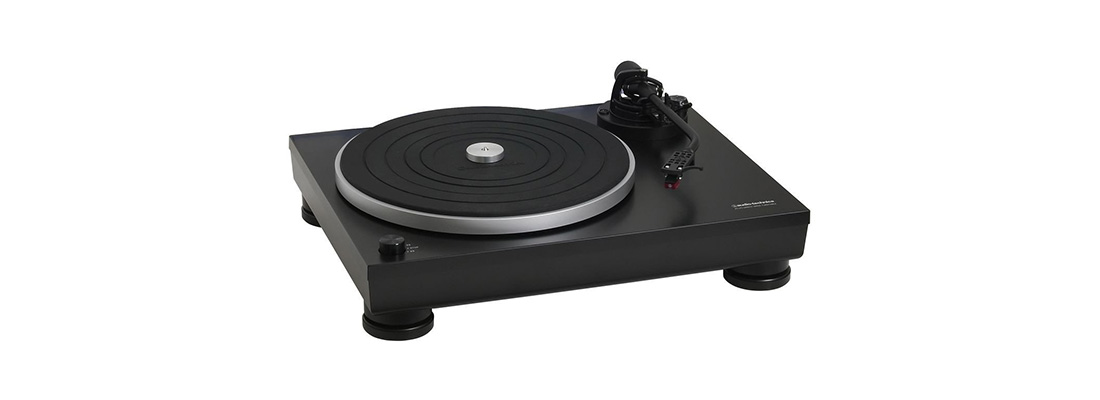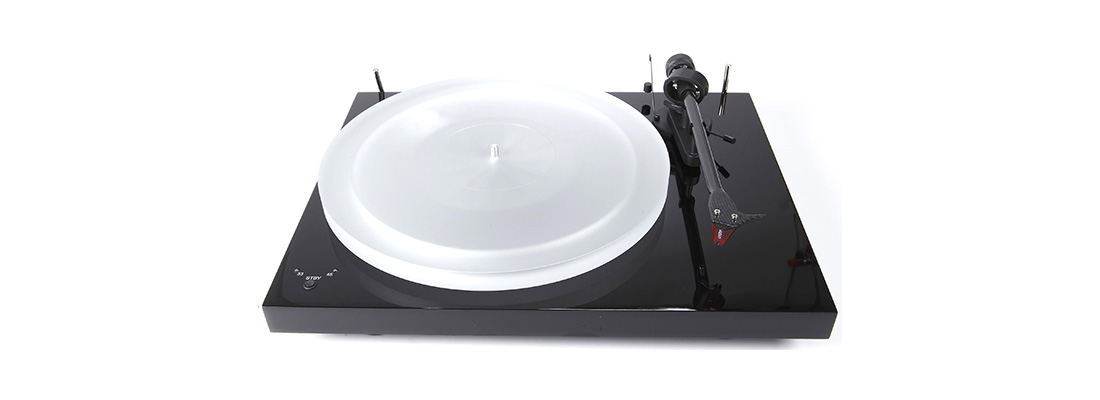Memorial Day (it’s celebrated annually on the last Monday of May) is dedicated to the memory of American soldiers who died in wars and armed conflicts in which the United States has ever taken part. Traditionally, this holiday is accompanied by family events, picnics, and sports events. Memorial Day sales mainly are short-term but contain a lot of profitable offers for those people who want to purchase appliances and home items. It’s a perfect time to buy and present something cozy in physical and mental terms, so turntables are extremely popular.
The best record player is the one that makes you go deeper into the vinyl music. Some listeners prefer retro style, the wooden casing, and heavy non-controllable needles. For others, the best turntable might be the one that has the USB port and the fully automatic operation. Some appreciate the solid turntable plinth and platter damping all the vibration and interference. Others value portability and choose small record players, preferably with the in-house preamp.
The revolutions per minute and the type of motor connection also influence the choice. The owners of the high fidelity 78 RPM records will definitely enjoy the HiFi turntable that is able to play them. At the same time, the beginner vinyl lover might be more than satisfied with the standard 33 RPM record player. Still, most of the modern models can also accommodate the 45 RPM records, featuring a special adapter for them.
The direct connection between the turntable motor and the platter is often appreciated by DJs and beatmakers, as it requires less effort to spin the record and allows more improvisation with the sound. The belt-driven record players have the motor put aside not touching the platter. It causes the platter to turn via the rubber belt. In this way, a good deal of the vibration and interference is submerged.
Thus, the best vinyl record player will differ for each category of vinyl fans. The best record players reviews presented here reveal the essential specs and qualities of each turntable, highlighting its uniqueness. The turntable reviews are based on the opposition of time-proven older model having the inimitable analog sound and the modern record player with multiple functions and effects.
Due to this article, you have a good opportunity to analyze a lot of decent models and decide on which devices are worth of attention and what Memorial Day deals can become the most profitable.
Memorial Day Turntables Deals
Best Record Player Under 100
Sony PS-LX300USB
This cheap record player is a good treat for a beginner in vinyl music. It is fully automatic and requires a minimal setup. Positioning the counterweight, placing the record, directing the needle, pressing the “start” button is all the owner of this record player must do. The turntable tonearm has a straight shape and static balance. It is supplied with the thin diamond stylus delivering the precise analog sound.
The turntable can spin two types of records – 33 ⅓ RPM and 45 RPM. They are spun lightly on the platter that is turned via the belt. Though the belt-driven motor isn’t noisy, the plastic casing lets some resonance at high pitch notes. Overall, it produces a pleasant mellow sound that becomes a bit stuffy in multi-instrumental compositions. Still, it plays the mids clearly and without interference. It could be well called the best USB turntable of the entry level, would its performance at low frequencies be more sharply outlined.
Pros
- Instant conversion to MP3, clean middle line, and sharp effects in the digitized version.
- The built-in preamp has enough power for quality sound and makes the turntable a plug-n-play device.
- Large handy buttons and knobs for the easy manipulating.
Cons
- No option for the cartridge replacement.
- The digital software doesn’t automatically split the tracks in the audio file.
Jensen JTA-230
This budget record player has a lot of options not available simultaneously in much more expensive models. It has a built-in digitizer and a USB-out for sending the digital copies to PC or an iPhone. The included software allows converting and editing the audio files.
This entry level turntable has integrated speakers, which is uncommon among the record player brands but might be a good starting bonus for a beginner in vinyl listening. The speakers are not too powerful, yet transmit the audio quite decently. The highs and mids are clean enough, and the range of music nuances is conveyed well. As to the lows, they have some resonance, especially at synthetic drums playing, which, though, isn’t critical and sounds much as good old 60s.
The turntable is bulky enough due to built-in phono preamp and speakers but isn’t heavy. The cabinet is plastic; the knobs, buttons, and sliders are large and remind the first turntable models. It makes a good record player for the retro fans. Such models on a Memorial Day sale especially attract attention due to their sound and classic design, therefore, many sellers on Amazon offer pleasant discounts on such devices.
Pros
- Aux input allows connecting headphones and external speakers.
- The turntable can handle different vinyl discs at three speed variations.
- The pitch regulator and tone tweaking knob let variating and adjusting the sound to the user’s liking.
Cons
- The built-in speakers are constantly turned on and cannot be disabled.
- The turntable tonearm doesn’t return automatically upon the completion of playing.
Best Record Player Under 200
Audio-Technica AT-LP60-USB
This lightweight turntable has a simple design and automatic operation leaving no place for mistakes. It doesn’t require user’s assistance to put the stylus on the record and return it, leaving no scratches on the disc. The moving magnet cartridge positions the stylus precisely.
The latter is diamond and glides on the disc surface smoothly deriving authentic analog sound. It handles the highs well, while the lows are a bit too soft and sometimes muffled. The mids are clear, so are the multiple instrument lines.
The record player has a belt-driven spinning system ensuring the quiet operation of the motor.
The sturdy aluminum platter additionally secures the player’s low wow & flutter and handles the disc carefully. It can spin at 45 RPM or 33 ⅓ RPM handling both types of records confidently. It would definitely deserve the title of the best automatic turntable in the budget category, if only it had more tweaking options like tracking force control, anti-skating, etc.
Pros
- Built-in record-and-edit digitizer software is both Mac- and Windows-compatible.
- Easy assembling and setup due to the clear and detailed manual instructions.
- Hinged dust cover secures the disc and the record player from the specks of dirt and dust.
Cons
- The RCA cables are short stationary ones and cannot be replaced without cracking up the turntable.
- No static balance prompts the felt platter cover to stick to the disc.
Pioneer PL-990
This affordable turntable has a belt-driven engineering design ensuring low vibration and steady tracking. The motor is the Pioneer’s innovation providing stability of both the turntable plinth and platter. The platter is metal and covered with the rubber mat preventing the static and the clicks it’s causing.
The operation is completely automatic, and the setup is easy. The record player can handle both 45 and 33 ⅓ discs; besides, the adjustment wheel allows variating the speed within each range. The specified turntable is easy to use and set up for work, and everyone can make sure of that thanks to the Amazon Memorial Day sale. Therefore, in addition to a good price, the buyer has a good opportunity to get a quick and prompt delivery (it’s better to carefully check the shipping conditions before the purchasing).
The turntable stylus is diamond and very thin, following the tracks with ease and precision. It is handled by the moving magnet cartridge. The tonearm features a universal cartridge connector, has a straight shape and light weight. It makes it highly sensitive and results in the clean authentic sound reproduction.
Pros
- Clear and confident main line, good stereo separation, crisp vocals.
- Low wow & flutter; slight to zero interference throughout the whole volume range.
- Big clearly labeled buttons; a separate button for the arm elevation.
Cons
- Hardwired cables don’t allow using the external amplifier.
- Might be not fit for larger old records due to the raised edges around the platter.
Best Record Player Under 300
Denon DP-300F
This sturdy player has considerable weight and isn’t the best candidate for the “portable turntable” nomination. It has a heavy rock-solid plinth submerging the vibration efficiently and backstopping the turntable’s low wow & flutter. Meanwhile, it is very simple in operation. The assembling doesn’t differ from other record players, and the tonearm doesn’t require any manipulation — it gets lifted and lowered automatically. The weight and pressure are tailor-cut to produce the authentic neutral sound and keep both the disc and turntable stylus safe and operational.
The belt-driven design additionally secures the turntable’s noiseless operation. It allows the music unveil on a silent background, accentuating the details. The midrange is very warm and rich, and the highs are clean. Lows might be muffled at the complex compositions, while generally being well outlined. With the built-in phono equalizer, this turntable might be called the best record player in the budget line, wouldn’t it drop the very low audio signals. This, however, could be fixed by using an external amplifier.
Pros
- The tonearm headshell can be removed, making the cartridge replacement easy.
- The lifting mechanism can be operated manually for navigating along the record.
- Diecast aluminum platter covered by the rubber mat secures the noiseless operation and prevents the statics.
Cons
- The speed accuracy might wander at the complex or highly dynamic play causing inadequate playback.
- The start button is a bit harsh.
Fluance RT81
Everything about this record player testifies it is made with the audiophile in mind. It possesses a complete system for delivering the exact natural sound, with all the slightest details.
The turntable tonearm is S-shaped and made of aluminum. It provides 2,0 grams of tracking force, which is carefully aligned to ensure the disc stays neat and whole. It is particularly important for the correct positioning of the elliptical needle.
The record player derives most of the sound of the disc, letting hear each instrument and each tonality precisely. The highs are clean and accentuated, the mids are vast and the lows are penetrating. However, if the disc is scratched or damaged in some way, the flaws will be heard just the same sharp.
The turntable has a solid wooden base and has minimalist design reminding of the retro models. There are no reasons for sparing it the title of the “best audiophile turntable”, but for the high-grade components that cost considerably at replacement. This device doesn’t belong to the best Memorial Day deals, but this item is sturdy and can become not only a good choice for music listening but also a pleasant-to-eye interior detail. Pay attention that sales on Amazon start 4-5 days before the holiday, so it’s better to monitor prices.
Pros
- The counterweight can be adjusted forming the highly-balanced anti-skating mechanism.
- High-quality integrated preamp adds to the audio clarity and detail.
- Four sturdy feet add to the turntable isolation and zero vibration.
Cons
- The mechanism for adjusting the speed accuracy is located on the bottom of the player and isn’t handy to operate.
- The adaptor for 45 RPM discs is made of brittle plastic and doesn’t have its storage place on a turntable.
Best Record Player Under 500
Rega Planar 1
This middle-class turntable has a simple design with a touch of elegance. The turntable plinth is gloss laminate and features nothing but the phenolic platter and the stylish Rega tonearm. The latter is straight-shaped, equipped with the tailor-made Rega carbon cartridge and has an inventive low-friction mechanism preserving the stylus and vinyl’s surface from damage. It is fitted with the specifically designed bearings transmitting zero vibration and resulting in the flat wow & flutter.
The thermoset base and precisely set mechanism result in the neat, rich, detailed sound with high dynamics. The lows are confident and deep, perfectly holding the rhythm. The treble is mild and clean, while mids are straightforward and bouncing. The soundstage is wide & warm, outlining each detail of the music improvisation flow. The absence of the integrated preamp involves further costs’ expenditure for an external amplifier; yet, leaves a place for an upgrade.
Pros
- Sharp clarity of the audio lets hear the slightest detail.
- Consistent speed throughout the whole playback.
- Simple setup with minimal user’s actions.
Cons
- Turntable plinth has low clearance and requires isolation if mounted on a non-sound proof surface.
- The pre-fixed anti-skating magnet cannot be adjusted in case of cartridge changing.
Audio-Technica AT-LP5
This solid middle-class turntable possesses all the features connecting it with the recent technologies while preserving the rich warm analog sound of vinyl.
It has an original J-shaped tonearm made with precision and accuracy. It is fitted with the metallic suspension mechanism and has anti-skating control and regulated counterweight. This allows positioning the needle precisely and getting the most out of the vinyl record.
The construction is solid and heavy, allowing zero acoustic feedback. The aluminum platter is additionally secure from vibration by the thick rubber mat.
The sound is very accurate, with the wide soundstage producing a presence effect. The highs might feel a bit bright, while the low frequencies are full and rich in detail.
The turntable has a direct motor-platter connection that places it in line among the valued DJ turntables. With the high-torque motor and a vibration-damping base, it would represent the best direct drive turntable, wouldn’t it have more on-board controls and attractions (like pitch control, strobe light, etc.)
Real music lovers will definitely be glad to get the Audio-Technica AT-LP5 on a Memorial Day sale that ends really quickly and the buyer has to be in time for purchasing this item.
Pros
- The dual magnet stereo cartridge is tailor-cut for this turntable model and brings the quality performance out of the box.
- Two-speed playback (33 ⅓ and 45 RPM), with strictly maintained speed pattern throughout the play.
- The integrated preamp can be turned off if an external source is connected.
Cons
- No tonearm automatic return.
- Power button is located on the back panel and it might be hard to access it.
Best Record Player Under 1000
Pro-Ject Debut Carbon Esprit SB
This high-end turntable has premium components and quality assembling. All of its parts are fitted seamlessly to provide flat noise feedback when working.
The motor is powerful and quiet, supported by the integrated Speed Box. The latter allows spinning the discs at 33 ⅓ RPM speed, 45 RPM, and even 78 RPM if the belt is changed.
The precisely positioned carbon tonearm is equipped with the high-class moving magnet cartridge and neatly balanced operation derive the full enveloping analog sound picture encoded in the vinyl disc. The main line is dynamic and fluid, the treble is crystal clear and the lows are thunderlike and rich with nuance.
The stylus touch mechanism is balanced precisely for a gentle yet exact tip positioning. It causes slow operation of the landing mechanism; still, the presence-like analog sound performance is a treat.
Pros
- Turntable platter is large and sturdy, made of acryl; not letting any vibe, static or interference from the base or the disc transmit into the sound.
- Comprehensive manual makes the record player setup easy.
- Sturdy base and fortified cables ensure the authentic audio signal delivery.
Cons
- The turntable tonearm is not vertically adjustable.
- The speed control button is joined with the start / stop button; the functions can be mixed at the light pressing.
Best Record Player Under 2000
Marantz TT-15S1
Everything about this costly record player is made to ensure pure vinyl sound. The motor emits no noise at all and is fully isolated from the turntable plinth floating inside it. It is connected with the platter via the silicon belt and can spin the vinyl records at standard speed options of 33 ⅓ RPM and 45 RPM with the sharp precision uncovering all the detail present in the live sound.
The ebony wood moving magnet cartridge and the precisely balanced premium-class tonearm reveal the authentic audio in full presence, against silent black background. The sound is crisp and highly detailed, with an open colorful soundstage and warm natural dynamics.
The plinth is solid and heavy, resting on the three wide feet designed to dampen the slightest vibration there might arise. The feet height can be adjusted ensuring the ultimate stability and premium sound at any turntable’s position. Even if this turntable under 2000 dollars is expensive for you, the Amazon Memorial Day sale can help with this problem. Monitor the price, check out the seller’s fidelity, read reviews, and add the Marantz TT-15S1 to the cart in order to get the true audial enjoyment and please yourself/close relatives with such a serious and good sounding gift.
Pros
- Solid build and perfectly balanced system result in the 80 dB signal-to-noise ratio.
- Highly sensitive cartridge and the ultra-thin diamond needle ensure that all the layers of the analog audio are exposed from the record.
- Minimalist design and simple manual setup.
Cons
- RCA and grounding cables are short.
- No dust cover supplied.
Buying Guide
What is a Stylus and How does it Work?
The sound is a cluster of waves sent through a medium (like the air, ether, water, etc.) It is conveyed by the vibrations “bumping” into the human ear membrane and is decoded through them.
This principle is crucial for the recording industry. Vibrations sent to the membrane activate the highly-sensitive needle of the recording device that moves and leaves the grooves in the brand-new vinyl disc upon its movement. When the disc is put on the turntable, the stylus moves at the same groove and “reads” what it has to represent.
Interacting with the groove, a thin and ultra-sensitive stylus is moved and thus a vibration is conveyed. The stylus transmits it to the cartridge, where the vibration waves are transferred into electrical signals. It is performed by the magnetically influenced coil. The signal is sent along the cables to the preamp or an external amplifier. There it is boosted and sent to speakers for the final reproduction.
Does Vinyl Sound Better than CD?
Vinyl discs record the audio signal in the analog format. It is the format the human’s ear accepts the sound. The type of recording used makes a “print” of the audio wave recreating its shape.
The CDs record the digital copy of the analog recording. The copy is made by making thousands of snapshots of the analog audio wave. Thus, it is a secondary capture of the sound allowing for more distortion and less clarity.
Besides, in order to reproduce the sound and make it audible, the digital record on the CD must be recorded again into the analog form in order to be reproduced by speakers. That brings two additional stages on the signal way from the musician / singer to the listener.
The more snapshots of the audio wave are made within a second, the more precise sound will be an outcome. However, there is also an accuracy of the capturing. It is measured in “bit” units and can vary in different conditions. So, there is another factor against the precision of the CD records.
Still, vinyl records can also feature interference, static, clicks that make the audio picture distorted and the sound non-recognizable. The discs tend to wear faster than CDs and they are more affected by dust that can completely stuff the grooves.
Why Turntable Skips?
Skipping is the feature of the turntable playback when the needle passes by some part of the disc groove not entering it. It causes the audible break in the sound flow, sometimes followed by the interference.
There are two major reasons for turntable skipping:
- Too light tonearm pressure. When the turntable tonearm isn’t aligned properly, it might skip at certain moments. The solution is balancing the tonearm adding a bit of weight to its end. In case your turntable doesn’t provide tonearm control, positioning a small weight object like a nickel, on the tonearm, might help.
- Disc issues. If LP has traces of wearing or damage or is dusted, the stylus might skip as soon as it encounters the unreadable track. In this case, cleaning the disc or removing the obstacle could help. Use a soft anti-static cloth to wipe the disc and apply one of the vinyl disc cleansing techniques described above. If a groove is damaged and can’t be restored, the light press on the tonearm while passing the skipping place might be a solution. In this way, a new groove is created allowing to avoid skipping.
Does Vinyl Last Long?
Vinyl discs are highly durable. They are made of the vinyl chloride, also known as vinyl resin. It makes the main component of any vinyl disc. For making the discs resistant and non-transparent, different additional components (plastifiers, stabilizers, carbon black) are added to the vinyl resin during manufacturing. The quality raw materials and their proper proportions ensure the longer life and better quality of the vinyl discs, their less tendency to static, etc. Such discs can endure several years of playing without getting worn. The modern audiophile has the vinyl records dating back to 1960s in their collections that still sound perfect. It means that turntable purchasing can probably belong to the Memorial Day best deals, as the device itself and vinyl record can be useful for decades (work during a long period of time (with pauses)) and will always bring some nostalgia to the house.
Certainly, the way of storage and usage of vinyl discs plays an important role. The dust-exposed, damaged discs won’t produce a clean sound, even if they are recently manufactured ones. At the same time, album cover storage and careful balancing of the tonearm (excluding too much pressure on the disc) will lead to the many years of pure analog sound enjoyment.
How to Clean Vinyl Records?
Vinyl discs are vulnerable to dust. Even the most caring use and storage don’t save a vinyl from acquiring dirt and dust upon several playbacks. Good news is that in most cases, it can be easily removed.
During cleaning, the user must be cautious and not to damage the disc. Here are three safe ways to clean the vinyl disc and preserve it intact:
- Special cleaning appliance. For ardent vinyl lovers, such device is must have. All you need is place the disc onto the “table”, cover it with the cleansing residue (use the supplied brush), and turn on the appliance. The special vacuum “tonearm” will remove all the dust and debris.
- Manually, by means of the PVA glue. Before cleaning the disc, apply the masking tape to the disc sticker (to preserve it from the glue). Then put a disc into a basin or a similar vessel and pour the PVA glue on it. The glue must cover the disc. Upon drying, take out the disc and remove the glue carefully.
- Manually, with detergent. Put the vinyl disc into the basic. Pour water on its surface. Then apply the detergent and cover the disc with it. Upon that, rinse the disc with the water.
Does Scratching Wear Down Vinyl Records?
Scratching is a DJ technique used for getting characteristic rhythmic patterns by moving the disc back and forth. It can be performed with a different speed.
All the sound produced from the disc on the turntable originates from the moment of the turntable stylus touching the vinyl disc groove. It “takes out” the sound pattern and transmits it further to the preamp and speakers. Any stylus movement, however, balanced the tonearm would be, will cause a certain amount of damage to the disc.
So does scratching. At these moments, the movement of the stylus along the disc’s grooves is sharply reversed several times, which might result in the slight damage to the grooves, their widening and further deterioration of the sound.
The good news is that such damage can be diminished. Balancing the tonearm precisely, adjusting the counterweight, cleaning the discs brings down the chances of vinyl to go to junk soon. Besides, the less resistance there is, the less damage can happen to the disc. Thus, getting a quality direct drive turntable will secure the vinyl disks during scratching exercises.
Is There a Need for Speakers when Playing Records?
There is no outright “yes” or “no”. If you are building an audiophile system and strive to make all components interact seamlessly delivering the most of the sound there is, then the high-quality speakers are must have. If your purpose is just occasional vinyl listening and you don’t have speakers yet, then a turntable with built-in speakers might make a good option for you. Meanwhile, a high-end soundbar or an AV-receiver with the phono input can also play the part of the speakers’ set.
When choosing the fitting speakers for the turntable system, there are several options. Depending on the space and budget, you can pick tower or bookshelf speakers. Remember that wiring also plays a part in the signal transmission; the sturdy well-protected cables will preserve its clarity along the way to the final speakers’ output. Still, if you have a modern Bluetooth turntable, the speakers can be connected wirelessly.

